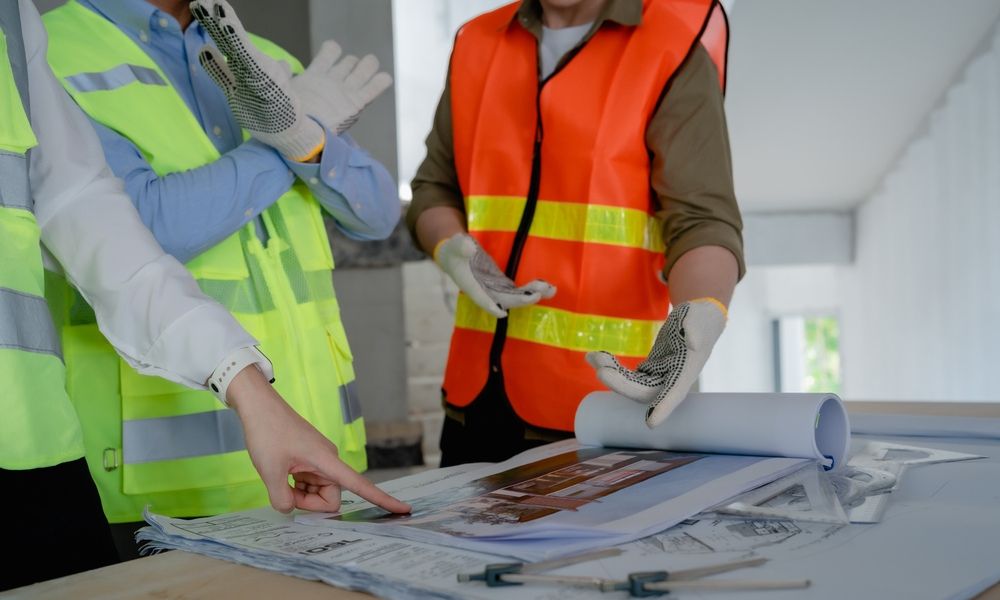Material takeoff sheets are essential tools in construction estimating, providing a detailed list of materials required for a project. An accurate and well-organized material takeoff sheet helps streamline the procurement process, control project costs, and minimize waste. However, creating an effective material takeoff sheet requires attention to detail and adherence to best practices. This guide will walk you through the top strategies for developing material takeoff sheets that are both accurate and efficient, setting your projects up for success.
What is a Material Takeoff Sheet?
A material takeoff sheet is a document used in construction estimating to list all the materials needed for a project. It details each material type, quantity, unit of measurement, and any additional specifications, serving as the foundation for budgeting, ordering, and managing resources.
Material takeoff sheets are used by estimators, quantity surveyors, and project managers to ensure that every aspect of the project’s material requirements is accounted for. They can be created manually using spreadsheets or with the help of specialized digital tools like Bluebeam Revu, PlanSwift, and CostX.
Why Are Material Takeoff Sheets Important?
Material takeoff sheets play a critical role in construction project planning and budgeting. Here’s why they are essential:
- Accurate Budgeting: By detailing the quantities and types of materials needed, takeoff sheets help estimators calculate precise costs, ensuring that projects stay within budget.
- Streamlined Procurement: Material takeoff sheets provide a clear list for procurement teams, making it easier to order the right materials in the correct quantities.
- Reduced Waste: Proper planning and detailed material lists reduce the risk of over-ordering, helping to minimize waste and control costs.
- Improved Efficiency: With a well-prepared takeoff sheet, project managers can allocate resources more effectively, reducing delays and improving overall efficiency.
Best Practices for Creating Material Takeoff Sheets
Creating a material takeoff sheet involves more than simply listing materials. To maximize accuracy and utility, follow these best practices:
Start with Accurate and Updated Project Documents

The foundation of an accurate material takeoff sheet is access to updated project drawings, blueprints, and specifications. Using outdated documents can lead to incorrect measurements, incomplete lists, and costly project delays.
- Double-Check Document Versions: Ensure that all documents are the latest versions to avoid discrepancies.
- Collaborate with the Design Team: Work closely with architects and engineers to clarify any ambiguous details or last-minute design changes.
Categorize Materials by Type
Organizing materials into categories on the takeoff sheet makes it easier to track, manage, and review each type of material. Typical categories include structural materials, framing, finishes, and mechanical, electrical, and plumbing (MEP) components.
- Use Standardized Categories: Choose categories that align with industry standards for consistency.
- Add Subcategories if Necessary: For complex projects, subcategories can further enhance organization, such as dividing structural materials into concrete, steel, and lumber.
Define Units of Measurement Consistently
Choosing consistent units of measurement for each material type ensures clarity and reduces errors. For example, use cubic meters for concrete, square feet for flooring, and linear feet for piping.
- Avoid Mixing Units: Stick to one unit of measurement per material type to avoid confusion.
- Match Units with Supplier Standards: Align units of measurement with those used by suppliers to simplify ordering and reduce conversion errors.
Use Digital Tools for Enhanced Accuracy
Digital tools like Bluebeam Revu, PlanSwift, and CostX can greatly enhance the accuracy and efficiency of material takeoff sheets. These tools allow estimators to measure quantities directly from digital plans, reducing manual calculations and human error.
- Bluebeam Revu: Known for its PDF markup capabilities, Bluebeam enables detailed measurements directly from digital drawings.
- PlanSwift: A user-friendly tool for digital takeoffs that integrates well with other estimating software.
- CostX: Ideal for quantity surveyors, CostX provides advanced measurement features and cost estimation capabilities.
Using these tools can save time and improve accuracy, especially for large and complex projects.
Include Detailed Descriptions and Notes
For each item on the takeoff sheet, provide a clear description and any additional notes that may be relevant. This information helps procurement teams understand specific requirements and reduces the likelihood of ordering errors.
- Add Specifications if Applicable: Include material grades, sizes, and other specifications as needed.
- Use Comments for Special Instructions: If certain materials require special handling or storage, add comments to communicate this information.
Cross-Check Quantities and Measurements
Double-checking quantities and measurements is essential to avoid costly errors. Even small discrepancies can lead to significant budget impacts, especially on large projects.
- Review Measurements in Multiple Stages: Cross-check measurements at different stages of the project to ensure accuracy.
- Use Peer Review: Have another team member review the takeoff sheet to catch any overlooked details.
Factor in Material Waste
It’s essential to account for material waste to avoid under-ordering. Construction materials often require a buffer to cover waste due to cutting, fitting, or breakage.
- Include a Waste Allowance: Add a buffer percentage based on material type and past project data.
- Adjust Based on Material Characteristics: For example, fragile materials like glass may require a larger buffer than concrete.
Keep the Takeoff Sheet Updated
As project plans change, so do material requirements. Regularly updating the takeoff sheet ensures that the information remains accurate and relevant throughout the project.
- Revise the Takeoff with Design Changes: Update quantities and materials as architectural or structural changes are made.
- Communicate Updates to Stakeholders: Ensure that procurement and project management teams are aware of any changes to avoid ordering issues.
Organize the Takeoff Sheet for Readability
A clear and well-organized takeoff sheet is easier to review, interpret, and use in decision-making. Structure the sheet with headers, subheaders, and consistent formatting for easy navigation.
- Use Columns and Filters: Set up columns for material type, quantity, unit, and comments, and consider using filters for larger projects.
- Highlight Critical Information: Use bold text or color coding for high-priority items to draw attention to important details.
Standardize Your Takeoff Sheet Template
Creating a standardized template for material takeoff sheets promotes consistency across projects, making it easier for team members to understand and use the document.
- Design a Reusable Template: Create a template that can be adapted for different projects while retaining core elements.
- Incorporate Industry Standards: Include fields that align with industry standards and best practices for comprehensive coverage.
Example of a Well-Structured Material Takeoff Sheet
An effective material takeoff sheet should include:
- Material Type: Clear category names (e.g., “Concrete,” “Drywall”)
- Description: Details about the material grade, size, or specification
- Quantity: The total amount required
- Unit of Measurement: Standardized units for each material type
- Notes: Special instructions, handling requirements, or relevant comments
The Benefits of Following Best Practices
Adhering to these best practices when creating material takeoff sheets offers numerous advantages:
- Improved Accuracy: Reduces the risk of errors and ensures materials are ordered in correct quantities.
- Cost Efficiency: Helps control costs by preventing over-ordering and minimizing waste.
- Streamlined Workflow: Facilitates efficient collaboration between estimators, procurement teams, and project managers.
Whether you’re a quantity surveyor, estimator, or project manager, these best practices will help you create material takeoff sheets that contribute to the overall success of your projects.
Conclusion
Creating a precise and organized material takeoff sheet is essential for successful construction estimating and project management. By following best practices, using digital tools, and ensuring accuracy, you can improve budgeting, reduce waste, and streamline the procurement process. Material takeoff sheets are a foundational tool in construction, and investing time to perfect them can make a significant difference in project outcomes.
Master Material Takeoff with Our Quantity Surveying Course
Looking to enhance your estimating skills? Our Online Quantity Surveying Course provides in-depth training on material takeoff, cost estimation, and more. Learn the best practices and techniques needed to excel in construction estimating and project management.
Enroll Now in Our Quantity Surveying Course and start your journey toward becoming a skilled quantity surveyor and estimator!




